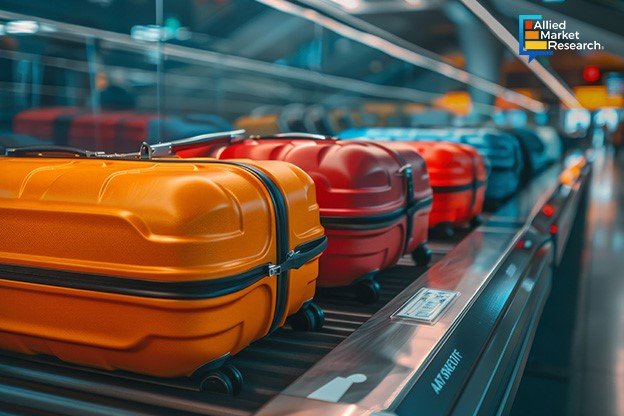Revolutionizing Travel Safety: The Role of Advanced Baggage Scanning Technologies in Modern Airports
The Growing Importance of Travel Safety
In an age where global travel is more accessible than ever, ensuring the safety of passengers and their belongings has become paramount. With millions of bags passing through airport security every day, effective screening processes are essential to prevent potential threats. Traditional security measures have evolved significantly over the years, and among the most crucial advancements in this area is the development of advanced baggage scanning technologies. These innovations have not only improved the efficiency of airport operations but have also reinforced passenger confidence in air travel safety.
Understanding Advanced Baggage Scanning Technologies
Advanced baggage scanner technologies refer to state-of-the-art systems designed to analyze the contents of luggage and detect prohibited items effectively. These systems utilize various methods, including computed tomography (CT), 3D imaging, and artificial intelligence algorithms, to enhance screening accuracy. Unlike older systems that relied on two-dimensional images, these cutting-edge scanners provide clearer, three-dimensional representations of bag contents, allowing security personnel to assess potential threats with greater precision.
The integration of artificial intelligence in baggage scanning has taken security to a new level. AI algorithms can analyze scanning data in real-time, identifying suspicious items and flagging them for further inspection. This capability not only speeds up the screening process but also reduces human error, which has historically been a significant factor in security breaches. As the aviation industry strives to adapt to evolving threats, such technologies play a crucial role in maintaining robust security protocols.
Enhancing Passenger Experience
The implementation of advanced baggage scanning technologies does not solely focus on safety; it also enhances the overall passenger experience. Traditional security checks often involve long lines and delays, which can lead to frustration and anxiety among travelers. With more efficient scanning systems in place, airports can streamline the screening process, reducing wait times and improving the flow of passengers through security checkpoints.
For instance, the introduction of CT scanners allows for the screening of bags without the need to remove laptops or liquids. This convenience not only speeds up the process but also decreases the likelihood of items getting lost or left behind. As passengers navigate airport security more swiftly, they can enjoy a more pleasant travel experience, which is particularly important in an industry where customer satisfaction is key.
Addressing Security Challenges
The airline industry faces a multitude of security challenges, from evolving terrorist tactics to the rising prevalence of smuggling operations. Advanced baggage scanning technologies provide a formidable defense against these threats. The ability to detect a broader range of dangerous items, including explosives, weapons, and narcotics, is vital in safeguarding passengers and crew alike.
Moreover, the integration of machine learning capabilities enables scanners to adapt continuously to new threats. By analyzing vast amounts of data from previous incidents, these systems can improve their detection algorithms, ensuring they stay ahead of potential dangers. This proactive approach to security not only protects travelers but also allows airports to maintain operational efficiency, minimizing disruptions caused by security incidents.
Global Adoption and Standardization
As the aviation industry embraces advanced baggage scanning technologies, global adoption and standardization become critical. Various international bodies, including the International Civil Aviation Organization (ICAO), are working to establish guidelines and best practices for implementing these technologies in airports worldwide. By creating uniform standards, the industry can ensure that security measures are consistently effective, regardless of the location.
Countries that invest in modernizing their airport security infrastructure will likely see a significant return on investment. Enhanced safety measures can lead to increased passenger confidence, ultimately boosting travel demand. Additionally, airports with advanced scanning technologies may benefit from reduced operational costs, as quicker screening processes allow for better resource allocation.
Challenges and Considerations
While the benefits of advanced baggage scanning technologies are clear, there are challenges and considerations that airports must address. The high cost of implementing and maintaining these systems can be a barrier for some facilities, particularly in developing regions. To overcome these challenges, public-private partnerships may be instrumental in funding and deploying advanced technologies.
Moreover, privacy concerns often arise with the use of advanced imaging and scanning technologies. Striking a balance between security and individual privacy rights is essential. Airports must ensure that their screening processes are transparent and adhere to local regulations to maintain the trust of the traveling public.
Training and Workforce Development
The successful integration of advanced baggage scanning technologies also requires a well-trained workforce. Security personnel must be equipped with the knowledge and skills to operate these systems effectively. Continuous training programs that familiarize staff with new technologies and evolving security threats are essential. By investing in workforce development, airports can ensure that their security teams are prepared to handle the complexities of modern baggage screening.
Future Innovations in Travel Safety
As technology continues to advance, the future of baggage scanning and airport security holds exciting possibilities. Innovations such as automated screening lanes and biometric identification systems are on the horizon, promising to further enhance the travel experience. As these technologies become more prevalent, they will likely redefine not only how airports approach security but also how passengers perceive safety in air travel.
In summary, the role of advanced baggage scanning technologies in modern airports is transformative, significantly improving travel safety and enhancing the passenger experience. By leveraging cutting-edge systems, the aviation industry can address evolving security challenges while fostering a more efficient and pleasant travel environment. As these technologies continue to evolve, the future of travel safety looks brighter than ever.






